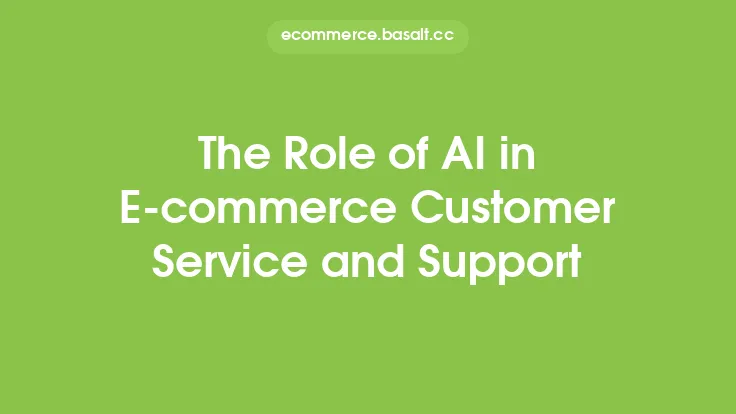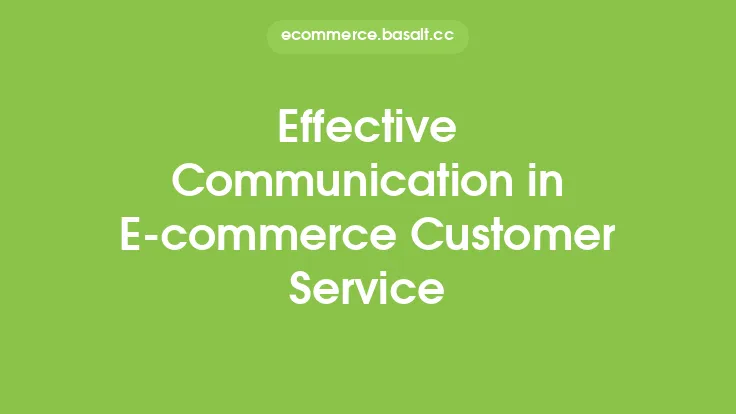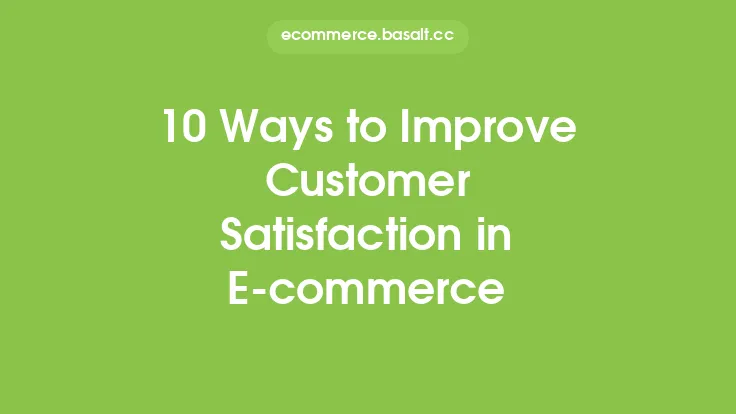In today's fast-paced e-commerce landscape, understanding customer expectations is crucial for providing effective support and ensuring long-term success. Customer expectations are the foundation upon which e-commerce businesses build their support strategies, and meeting these expectations is essential for driving customer satisfaction, loyalty, and ultimately, revenue growth. In this article, we will delve into the world of customer expectations in e-commerce support, exploring what customers expect, how to understand their needs, and strategies for meeting and exceeding these expectations.
Introduction to Customer Expectations
Customer expectations in e-commerce support are shaped by various factors, including past experiences, word-of-mouth, and the overall quality of service provided by competitors. Customers expect e-commerce businesses to provide timely, personalized, and effective support across multiple channels, including phone, email, live chat, and social media. They also expect support agents to be knowledgeable, empathetic, and empowered to resolve issues quickly and efficiently. Furthermore, customers expect transparency, accountability, and a seamless support experience that is tailored to their individual needs and preferences.
Understanding Customer Needs
To understand customer expectations, e-commerce businesses must first understand their customers' needs. This involves gathering feedback, analyzing customer behavior, and using data and analytics to identify trends and patterns. Customer needs can be categorized into several key areas, including product information, order tracking, returns and refunds, technical support, and account management. By understanding these needs, e-commerce businesses can develop targeted support strategies that address the specific pain points and challenges faced by their customers.
Setting Clear Expectations
Setting clear expectations is critical in e-commerce support, as it helps to manage customer expectations and prevent misunderstandings. This involves clearly communicating support channels, response times, and resolution processes to customers. E-commerce businesses should also establish a comprehensive FAQ section, provide detailed product information, and offer transparent shipping and return policies. By setting clear expectations, e-commerce businesses can reduce customer frustration, improve satisfaction, and increase loyalty.
Personalization in E-commerce Support
Personalization is a key aspect of e-commerce support, as customers expect support agents to be knowledgeable about their individual needs and preferences. This involves using customer data and analytics to tailor support interactions, offer personalized recommendations, and provide customized solutions. Personalization can be achieved through various means, including using customer names, referencing past interactions, and offering personalized product suggestions. By personalizing the support experience, e-commerce businesses can build trust, increase customer satisfaction, and drive loyalty.
The Role of Technology in E-commerce Support
Technology plays a vital role in e-commerce support, enabling businesses to provide efficient, effective, and personalized support to customers. This includes using tools such as live chat, chatbots, and social media to provide real-time support, as well as leveraging data and analytics to gain insights into customer behavior and preferences. E-commerce businesses should also invest in customer relationship management (CRM) software, helpdesk software, and other technologies that enable them to manage support interactions, track customer issues, and analyze support performance.
Measuring Customer Expectations
Measuring customer expectations is essential in e-commerce support, as it helps businesses to understand whether they are meeting customer needs and exceeding expectations. This involves using metrics such as customer satisfaction (CSAT), net promoter score (NPS), and first contact resolution (FCR) to gauge support performance. E-commerce businesses should also conduct regular customer surveys, gather feedback, and analyze support interactions to identify areas for improvement. By measuring customer expectations, e-commerce businesses can refine their support strategies, improve customer satisfaction, and drive long-term success.
Strategies for Meeting Customer Expectations
To meet customer expectations in e-commerce support, businesses should focus on providing timely, personalized, and effective support across multiple channels. This involves investing in support agent training, leveraging technology to streamline support processes, and using data and analytics to gain insights into customer behavior and preferences. E-commerce businesses should also prioritize transparency, accountability, and empathy in support interactions, as these are critical components of a positive support experience. By implementing these strategies, e-commerce businesses can meet customer expectations, drive customer satisfaction, and achieve long-term success.
Conclusion
Understanding customer expectations is critical in e-commerce support, as it enables businesses to provide effective, personalized, and timely support that meets the evolving needs of their customers. By understanding customer needs, setting clear expectations, personalizing the support experience, leveraging technology, measuring customer expectations, and implementing targeted support strategies, e-commerce businesses can drive customer satisfaction, loyalty, and revenue growth. As the e-commerce landscape continues to evolve, it is essential for businesses to stay focused on customer expectations, using data, analytics, and feedback to refine their support strategies and deliver exceptional support experiences that exceed customer expectations.





